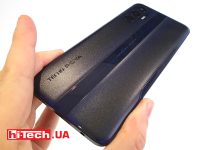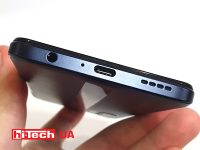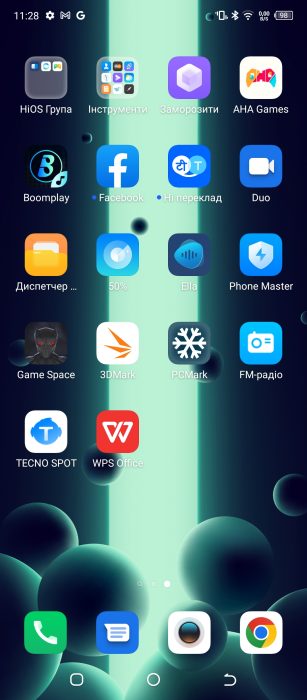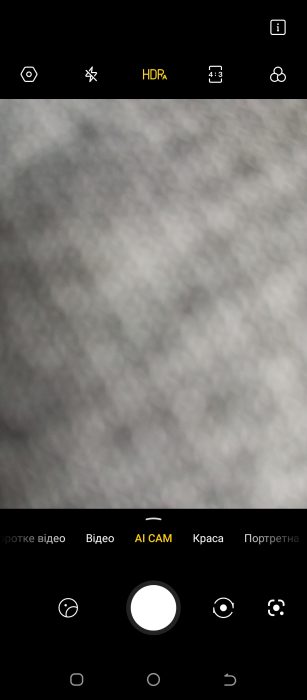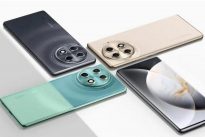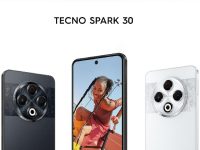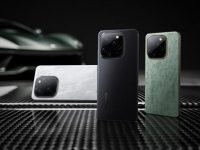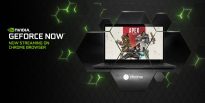Tecno Pova 3 review: bright features
09.11.22Tecno continues to produce affordable smartphones, which from year to year boast more and more interesting equipment. The fact is that just a couple of years ago, the company’s smartphones felt like downright budget ones. Over the years, their price has remained approximately the same, but screens, processors and cameras have become increasingly relevant. Today’s model is also interesting in at least several aspects. The savings most clearly affected the main camera modules, but we’ll tell you about everything in order.
Appearance of the Tecno Pova 3 smartphone
In terms of design, Tecno is not afraid to experiment like a number of other manufacturers, so while the front panel does not distinguish the Pova 3 from other smartphones, the back panel looks interesting. It is plastic, in our case blue.
The surface shines beautifully in the light rays. But the most interesting thing is the glossy strip in the center, inside of which there is a backlight. Moreover, this feature is only available in the blue version of the device. It was not sold in white and black.
True, the LED settings are limited; for example, you cannot select colors for individual activities; instead, you can only activate or turn off the backlight for calls, charging, messages, and games. To highlight all these design features, the included silicone case is transparent.
The location of the cameras is standard, but there are no protrusions. A flash is installed next to them.
On the left side there is a tray for two nanoSIM cards and one memory card. Two sevens cannot work on cellular networks at the same time; you should select a 3G or 4G source in the settings and change it if necessary.
On the right side is the volume and power button. The latter has a built-in fingerprint scanner. At the top end there is a stereo speaker, at the bottom there is a 3.5 mm headphone port and a symmetrical USB Type-C.
Tecno Pova 3 smartphone equipment:
Tecno Pova 3 equipment
On the front side of the screen there is an obvious thickening of the lower frame, which forms a chin. But this is honestly shown in all photographs and renders of the device. I would really like to see frames of the same thickness on all sides, but this is still a rare occurrence in Android devices.
The display has a diagonal of 6.9 inches, with FullHD+ resolution and a refresh rate of 90 Hz. The pixel density is 387 pixels per inch, which we would call excellent. The brightness reserve in the matrix backlight is standard. On a sunny day, the content is clearly visible, but direct sunlight should be avoided. Color reproduction is on par, gradients are displayed without gradation, and viewing angles are also not affected. Given the diagonal, this is a good option for watching YouTube or movies.
The Tecno Pova 3 is powered by a MediaTek Helio G88 processor and 6GB of RAM. There is also a version with 4 GB of RAM, but it already has a minimum of 64 GB of internal memory versus 128 GB. Memory type eMMC 5.1. We would also note that 4 GB of RAM is not enough for stable operation of a smartphone. Although there is a built-in ability to redistribute 3 GB from permanent memory to RAM, in practice we did not see any obvious acceleration, so it is better not to save and take the top version.
Both in synthetic tests and in games, Tecno Pova 3 performs very well for a budget model. There are no lags in games like PUBG, WoT Blitz and Aspalt, the frame rate is stable at medium settings. However, unfortunately, it will not be possible to unlock the potential of a 90 Hz screen at maximum graphics settings due to the lack of processor capabilities. When playing games, the case heats up noticeably and the battery charge naturally decreases faster, but even under such conditions the smartphone lasts quite a long time.
As for the proprietary HiOS shell, it still overloads the smartphone, both in terms of the number of applications and in terms of performance when drawing effects. Let us remind you that HiOS has desktops, an application menu in a list, and the left screen is given over to widgets. Swiping activates the system search up. When you swipe down to the left of the front camera, you get a clear message, and if you swipe to the right of the camera, then numerous quick settings immediately open.
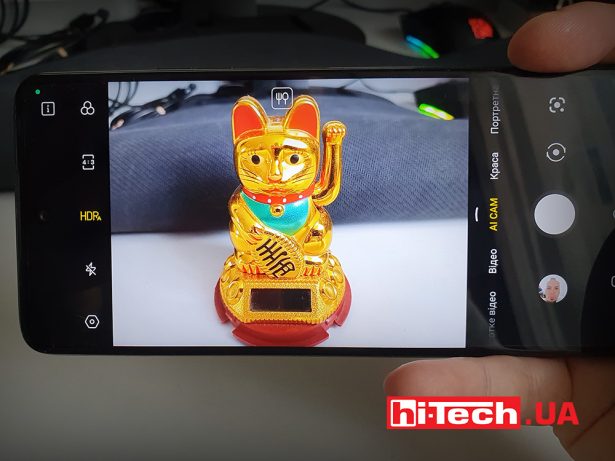
The manufacturer claims to have a 50 megapixel triple camera installed, but in practice the main module shoots by default with 12.5 megapixel pixel combining technology. It features an f/1.6 aperture and a wide sensitivity range from ISO 100 to 16,000. You can shoot at 50 megapixels with the Ultra HD mode in the camera interface, but the sharpness of such photos drops slightly.
The main camera records video in a maximum resolution of 2K at 30 FPS. 1080P and 720P modes are also available.
The other two cells are responsible for depth of field and distance determination. We will publish some example photos below.
The device handles gradients in the sky well, details are clearly visible, but with the slightest lack of light a “light soap” already appears.
The 8 megapixel front module takes selfies decently. It also has its own flash. You can turn beauty up to the maximum and get a Hollywood self. Portrait mode often gets edges wrong and can blur out half of an object that is directly in front of the camera but not completely included in the frame. If you let the smartphone think and do not release the shutter, the limit will be determined correctly.
The smartphone has an NFC module, a memory card slot and two sevens. At one time, this was the recipe for the best smartphone, but today the competition in the market is too great. For example, a sub-brand of budget rice models has the same hardware, but more stable firmware.
I was pleased with the autonomy. For an hour of watching a video on YouTube via Wi-Fi with full screen brightness, the smartphone uses about 8%, that is, you can count on 12 hours of playback. In serious toys, everything will be more difficult, about 3-4 hours. If you just carry the device in your pocket and scroll through social networks for several hours, then it will be enough for 2 days.
At the same time, the battery capacity is not any – 7000 mAh. In addition, a charging power of 33 W is supported, which restores the charge somewhat more quickly. The battery is fully charged from the charger kit within 3 hours.
Reverse charging (10 W) is supported, when the smartphone can act as a power bank for other devices. But in this case, a separate OTG adapter is required, which is not included in the kit. Wireless smartphone charging is not supported.
Impressions from Tecno Pova 3
The Tecno Pova 3 smartphone is interesting for its price, cool feature with backlighting and a good screen. Unfortunately, the speed of the firmware spoils this impression and the high Hertz screen speed is offset by problems with displaying the interface. The main advantages of Tecno Pova 3 are a large display with good characteristics, sufficient autonomy and the presence of the required minimum of options – symmetrical USB and NFC. The smartphone turned out to be a universal pocket device, albeit large and heavy.
Characteristics of the Tecno Pova 3 smartphone
| OS: | Android 12 + HiOS 8.6 |
| Screen: | 6.9”, 1080 x 2460, IPS, 990 Hz |
| Processor: | MediaTek Helio G88, 8 cores |
| Graphics: | ARM Mali-G52 MC2 |
| RAM + storage | 6+128 GB |
| Main camera: | 50 MP, f/1.6
2 megapixels, f/2.4 AI module |
| Front camera: | 8 megapixels, f/2.0, dual flash |
| SIM slot: | 2xnano-SIM + Micro SD |
| Networks: | 2G (GPRS/EDGE)
ZG (VSDMA/UMC/NSPA) CHG (LTE) |
| Communications: | Wi-Fi 5 802.11ac, Bluetooth 5.0, NFC, 3.5 mm audio |
| Navigation: | A-GPS, GPS, Beidou, GALILEO |
| Connector: | USB Type-C |
| Sensors: | Accelerometer
Gyroscope Light sensor Proximity sensor |
| Protection: | no |
| Battery: | 7000 mAh |
| Charging power: | 33 W |
| Dimensions: | 172.3×79.2×8.72 mm |
| Weight: | 250 g |
| Supplier: | Representative office of Transission in Ukraine |
| Price: | $215 |
Rating:
+ design elements
+ large battery
+ equipment
+ price
-weight
hi-tech.ua project manager
Don't miss interesting news
Subscribe to our channels and read announcements of high-tech news, tes
Oppo A6 Pro smartphone review: ambitious

Creating new mid-range smartphones is no easy task. Manufacturers have to balance performance, camera capabilities, displays, and the overall cost impact of each component. How the new Oppo A6 Pro balances these factors is discussed in our review.
Editor’s Choice 2025. Best devices of the year by hi-tech.ua

The best gaming laptops, mice for work, gaming keyboards, smartphones, and wireless headphones of 2025. Among them, we will highlight the most interesting ones and those that we can recommend buying.
NVIDIA is introducing restrictions for all GeForce Now users games NVIDIA
NVIDIA explains the decision by the desire to maintain stable platform operation, high streaming speeds, and minimal queues for users.
Memory shortage forces ready-made computers to be sold without RAM computer ram
American company Paradox Customs has announced the launch of sales of ready-made desktop PCs without installed RAM. The company explains this decision by the shortage of RAM modules




